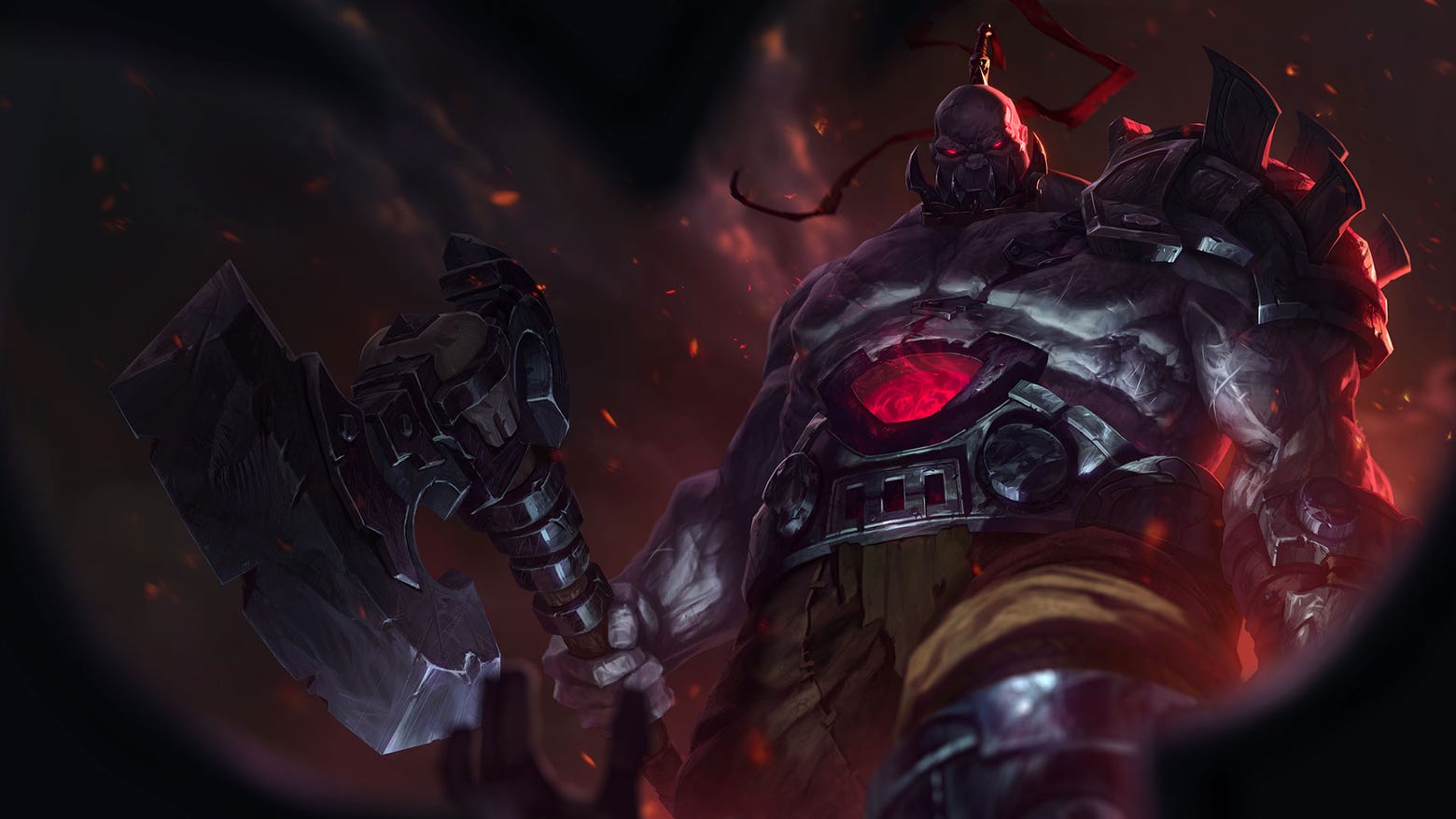This week’s focus is on counterplay, one of our principles of Champion gameplay design, rather than upcoming work or the state of the current game. There's not a lot new here for longtime readers, but it's been a while since we touched on the subject so wanted to share our thinking with newer players.
Champion Counterplay
Counterplay, one of our key values, could be defined as “action, choice, or strategy a player can use to mitigate or overcome an enemy threat.” This has been a staple of our design philosophy for many years and has improved League time and time again when we apply it well. The two main benefits of this game design principle are:
- Fairness - Having an understandable, clear, and useful response significantly reduces the frustration of a losing game or death even if a player or team can't perfectly execute on it at their current skill level. It helps players grow by pointing them toward actions they could have taken to succeed, rather than just feel like the game cheated them. (This is also often referred to in game design as Agency.)
- Depth - Champion designs that leave room for an opponent to respond add many additional layers to the depth of the experience. Battles can be a back and forth of mechanical and mental skill instead of a “who shoots first” one-and-done experience.
"The ideal champion has clear strengths and weaknesses that offer counterplay at a strategic level, paired with tactical counterplay for in combat response."
Counterplay can come in many forms, and every champion needs a slightly different way of delivering the appropriate counterplay to match their unique strengths and weaknesses:
-
Tactical Counterplay - This is the “in the moment” opportunities to respond to a spell or champion combo.
- Notable examples - Dodging a skillshot, interrupting a channel, long windup for preparing defenses, and positioning behind an ally or minion to block attacks.
- Tactical counterplay is essential for super high impact moments or combos that will often guarantee death like Blitzcrank hook, Ashe R, or Sion Q.
- In most cases it’s best to make sure that tactical gameplay is universally accessible (versus being tied to a specific champ ability like a dash or immunity) so that all opponents have the opportunity to respond to this impactful spell.
- Too much can actually be a bad thing. Not every spell needs tactical counterplay, and too much leads to a kit that feels clunky or overly unreliable.
- Impact and counterplay should often be proportional: Stronger effects benefit from more counterplay. (Some spells like Ashe R do both at once with an increasing stun duration as the spell moves further and gives opponents more time to dodge)
-
Strategic Counterplay - This type of counterplay is accessed out of combat and often by the team (instead of in combat like tactical counterplay).
- Notable examples - Building counter items, invading a weak early jungler, grouping against an assassin, using a blue trinket to avoid an ambush, pushing into a champion with poor waveclear.
- Strategic counterplay can be connected to a champion’s specific mechanics (like using control wards to counter Evelynn), but it’s more often a part of dealing with that champion's broader goals, like splitpushing or hyperscaling
- Strategic counterplay can be difficult to understand and appreciate because many forms of it are about setting up the right fight (or avoiding it), rather than executing within a fight. Adding signals that expose good strategic play can get more players engaged in it (pings for example do this well).
-
Champion Weaknesses - This is a set of properties, champion class, or team strategy that tend to succeed against a champion.
- Notable examples - Xerath’s immobility makes him weak to mobile assassins, Qiyana’s burst damage runs out of steam against a tank, Nasus is kited by mobile ranged champions.
- These weaknesses should lead to a moderate disadvantage, not a complete counter. The variety that comes from playing the game from advantaged or disadvantaged positions (compared to a perfectly level playing field at all times) helps games from feeling too same-y, but if there is no chance of winning against a counter too much agency is lost.
Finding the right counterplay for a champion is always a bit different, but a commonly successful approach is to design around their strengths.
- Kayn is meant to transform into a near-godlike form in the late game. This led to both a strategic early game weakness and putting a strong tactical counterplay opportunity in his W that stays relevant even when he’s a big late game boy.
- If Jhin delivers best in class CC and damage at long ranges, it makes sense to pair that with a clear weakness to very tanky teams because he lacks the sustained damage to deal with them. His extreme range also led to clear tactical counterplay needs, so W and R offer opportunities to dodge or mitigate.
I hope these insights were interesting to you all, and you can use your knowledge of these design values to hold us to a high standard and help make League better every day. Thanks again for playing with us.
